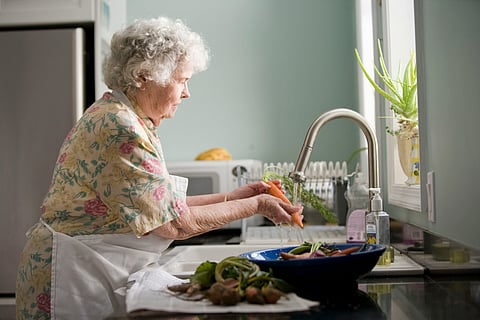Safety First-How to Make Seniors More Comfortable Living in Their Own Homes
As people age, staying in their own homes often brings a sense of independence and familiarity. However, creating a safe and comfortable environment for seniors involves careful planning. Small adjustments can make a big difference, providing peace of mind to both seniors and their loved ones.
So in this post, we'll highlight some practical ways to improve safety and comfort for older adults while addressing their physical and emotional needs.
Make everyday tasks easier with smart adjustments
Everyday tasks can become more challenging with age, so making adjustments around the home is important. For instance, adding grab bars in bathrooms helps prevent slips and falls, especially on wet surfaces. Non-slip mats in the shower and near sinks can also provide extra security.
Rearranging frequently used items within easy reach minimizes the need for bending or stretching. In the kitchen, keep heavy pots on lower shelves, and store daily essentials like plates and mugs on countertops or easily accessible drawers.
Improve lighting for better visibility
Proper lighting reduces the risk of accidents and can even enhance a senior's mood. Brighten dimly lit areas with energy-efficient bulbs, and consider motion-sensor lights in hallways and staircases. These lights make it easier to navigate at night without fumbling for a switch.
Natural light is equally valuable. Open curtains during the day to let sunlight in, which can improve visibility and provide a dose of vitamin D. For those with sensitivity to light, adjustable blinds are a simple solution.
Use technology for peace of mind
Technology can play a significant role in keeping seniors safe. A medical alert system such as Life Assure allows seniors to call for help with the press of a button during emergencies. These devices provide reassurance to both seniors and caregivers, especially for those living alone.
Smart home devices can also be helpful. Voice-controlled assistants like Alexa or Google Assistant let seniors set reminders for medications or appointments, turn on lights, and even control thermostats without needing to move around too much.
Minimize tripping hazards throughout the house
Tripping hazards are one of the leading causes of injuries among older adults. To reduce risks, remove loose rugs or secure them with double-sided tape. Declutter walkways and avoid leaving cords or cables where someone could trip over them.
Furniture arrangement matters as well. Leave enough space for easy movement, especially if a senior uses a walker or wheelchair. For a senior living with mobility challenges, clear and wide paths can make a significant difference in their comfort and safety.
Focus on bathroom safety
The bathroom can be a particularly risky area. Installing a walk-in shower or tub with a built-in seat can make bathing safer and more comfortable. A handheld showerhead is also a great addition for flexibility.
Toilet safety rails offer support when sitting down or standing up. If rails aren’t an option, raised toilet seats can provide similar assistance. Always ensure the bathroom floor stays dry, as even small puddles can lead to dangerous falls.
Maintain a comfortable and functional environment
Comfort goes beyond physical safety. Temperature regulation is key, so make sure the home stays warm in the winter and cool during summer months. Programmable thermostats can simplify this task.
Ergonomic furniture, such as chairs with good back support, can make everyday activities more enjoyable. A comfortable recliner in the living room, paired with soft lighting, can create a cozy and inviting space for relaxing or reading.
Encourage social connections and mental stimulation
Staying socially connected and mentally engaged is vital for overall well-being. Set up a comfortable spot for phone or video calls to help seniors stay in touch with family and friends. If mobility isn’t an issue, consider arranging weekly outings or visits with loved ones.
Books, puzzles, and hobbies like knitting or painting can provide mental stimulation. Creating a small area dedicated to these activities can encourage regular use and offer a sense of purpose.
Regular maintenance and emergency planning
Regular home maintenance helps prevent unexpected issues. Check smoke alarms and carbon monoxide detectors every few months, replacing batteries as needed. Keep emergency numbers visible near the phone or stored in a senior's mobile device for quick access.
An emergency kit with items like flashlights, batteries, water, and non-perishable food should be kept in an easily accessible place. Having a clear evacuation plan in case of natural disasters can also provide added security.
Helping seniors stay comfortable and safe in their own homes is about combining thoughtful changes and ongoing support. By addressing potential risks and enhancing their living space, seniors can enjoy their independence while feeling secure. Small changes can lead to big improvements in their quality of life, making senior living both safe and enjoyable.
Inspired by what you read?
Get more stories like this—plus exclusive guides and resident recommendations—delivered to your inbox. Subscribe to our exclusive newsletter
Resident may include affiliate links or sponsored content in our features. These partnerships support our publication and allow us to continue sharing stories and recommendations with our readers.

